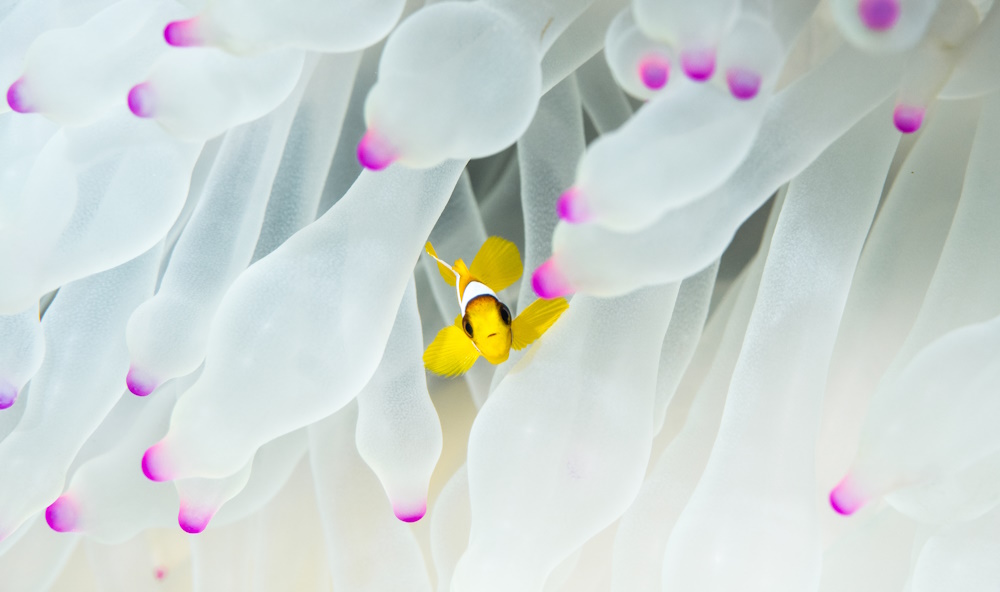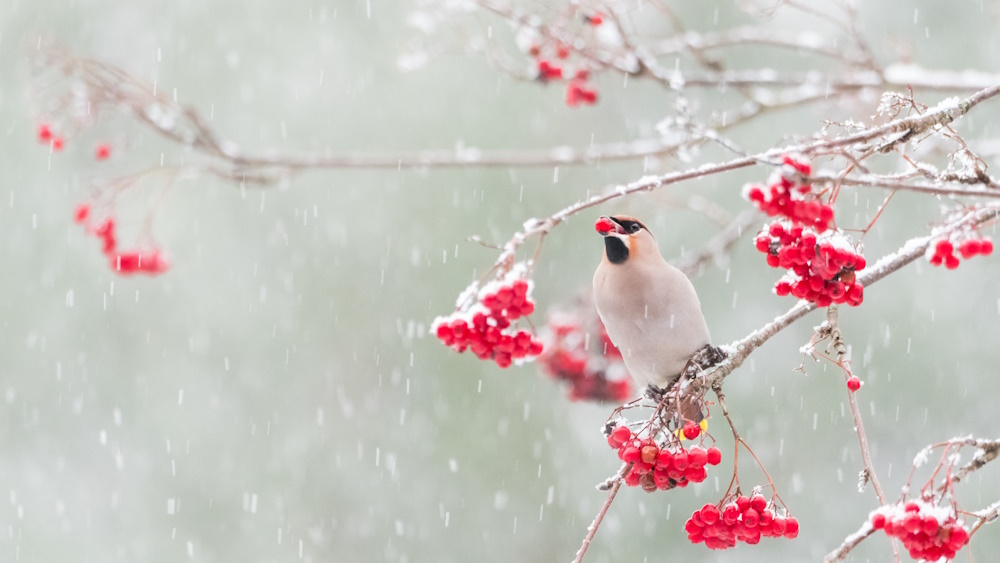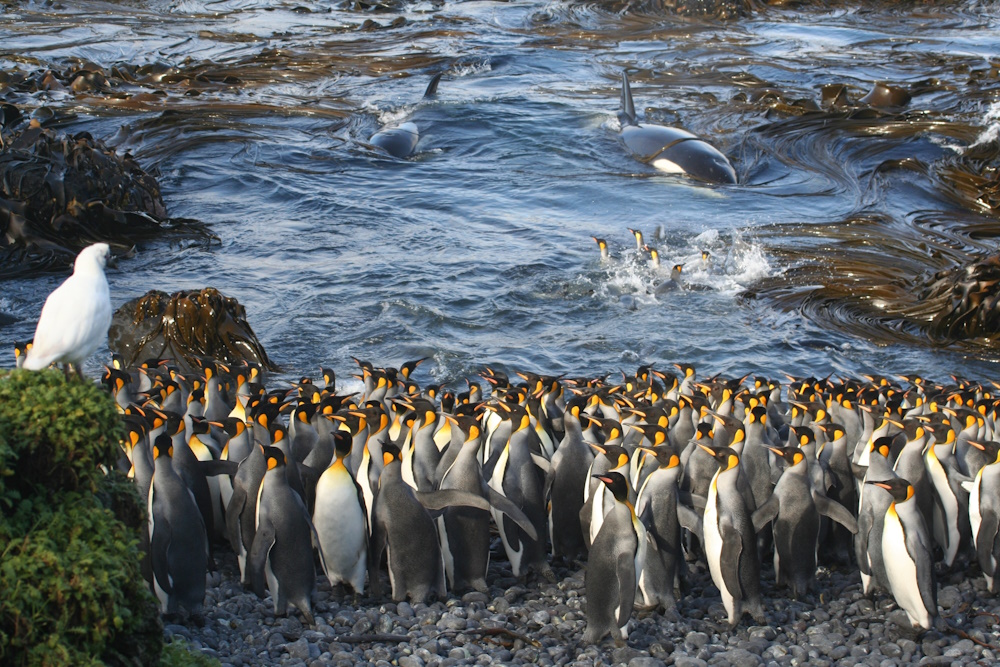Ecology and Environmental Science 2016
Shortlisted entries in the Ecology and Environmental Science category from the 2016 Royal Society Publishing Photography Competition.
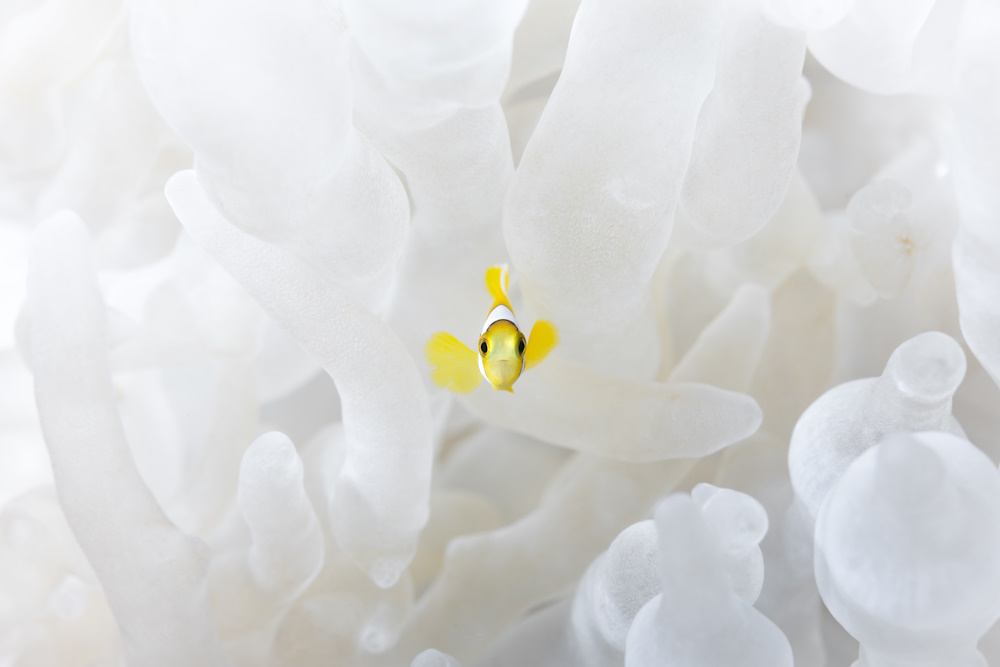
Category winner: Ecology and Environmental Science. "In a world without colour" by Tane Sinclair-Taylor. A solitary juvenile clown fish (Amphiprion bicinctus) stands out in its colourless habitat among the tentacles of the sea anemone Entacmaea quadricolor. The once colourful sea anemone has lost its colour following a global beaching event. Elevated sea temperatures have caused the loss of an algae (zooxanthellae - Symbiodinium) which usually lives symbiotically in the anemone’s tissue. Along with the loss of photosynthetic pigments, the absence of algae makes the anemone appear pale and ‘bleached’. This photo was shot during a research cruise documenting devastating post-bleaching coral mortality in the Farasan Banks in the Red Sea, Saudi Arabia. The lone fish seems like a timely analogy for a generation that may grow up in a bleak future without the colourful and diverse coral reefs that we have today.
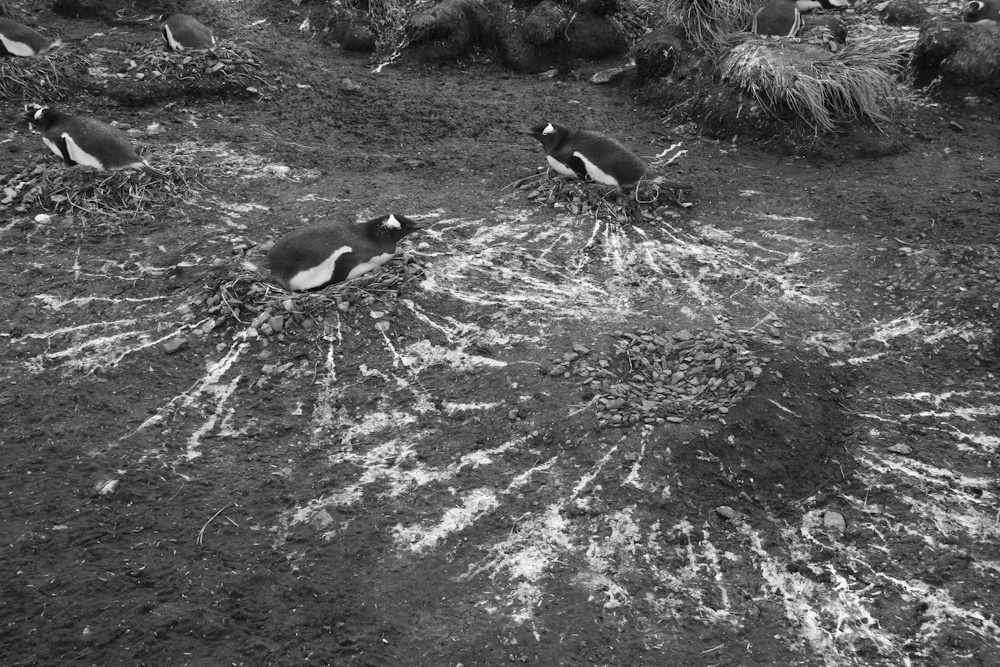
Runner up: Ecology and Environmental Science. "Les artistes" by Tegwen Gadais. This photograph was taken on Royal Bay located on the island of South Georgia, where I observed Gentoo penguins seemingly “decorating” their nest with guano – their excrement. Parents will build up a nest of stones, sticks, grass, feathers or any other suitable material that is available around them, and be positioned where they can access the ocean. Once the eggs have been laid each parent will take turns incubating them, relieving themselves by lifting their tails away from the nest and creating the long streaks seen in the picture. Incubation lasts for over a month and hatched chicks will remain in the nests for several weeks before moving to a communal crèche where they are fed for another two months. Although the streaks provide a striking image, the amount of guano and other waste accumulated means that the penguins will need to change their nesting ground each season.
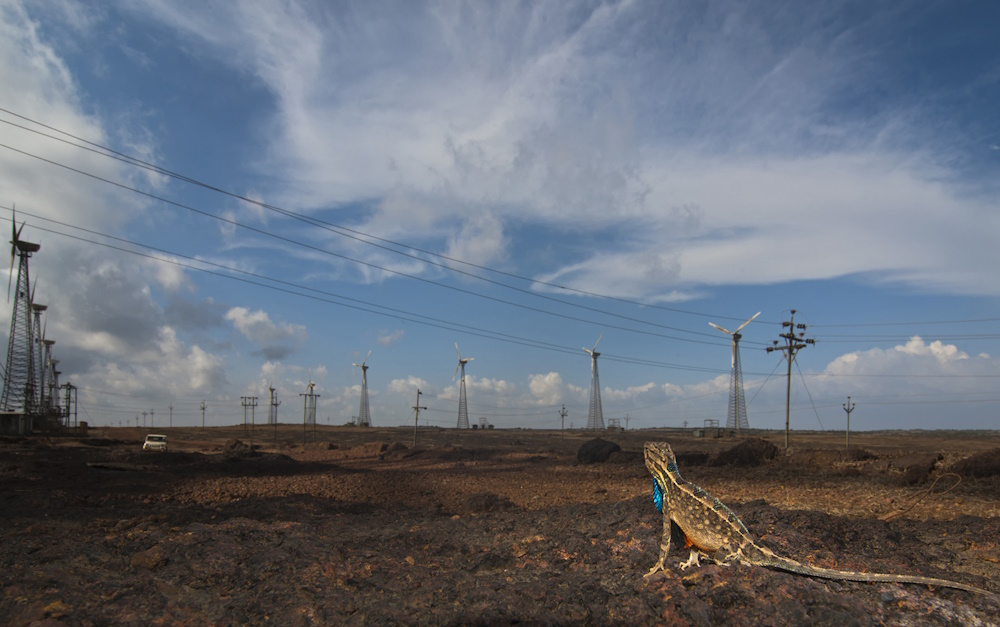
Special commendation (Publisher’s choice). "Speeding divergence" by Prasenjeet Yadav. The Superb fan-throated lizard (Sarada superba) is a native to a small high-elevation, iron-rich and humid, plateau in the northern Western Ghats of India. About two decades ago, a large part of this plateau was converted into one of the largest wind farms in Asia. This has resulted in drastic changes in the ecology of this charismatic lizard species. Researchers from Dr Thaker’s lab at the Centre for Ecological Sciences, Bangalore have found that wind-farms result in a decrease in raptor densities which in turn results in an increase lizard abundances. Interestingly, they also find that the lower levels of predation in wind-farms also result in a change in the physiology, morphology and behaviour of the lizards, seemingly accelerating the process of trait divergence in less than two decades.
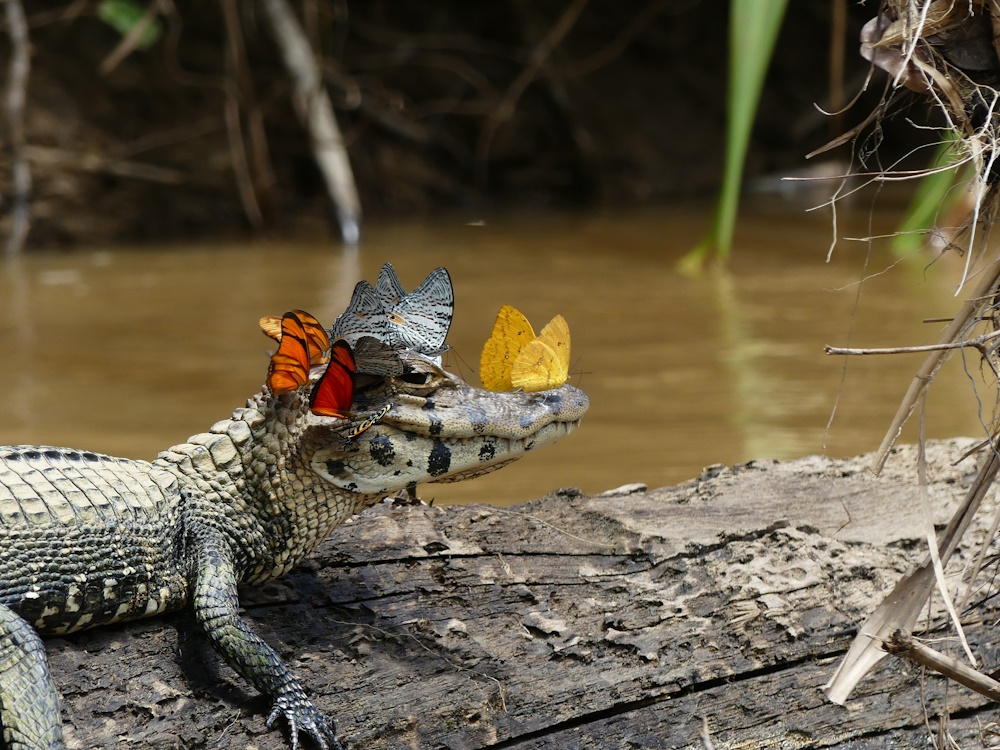
Special commendation. "Butterflies and caiman" by Mark Cowan. Colourful butterflies gather on the head of this caiman to collect salt - an important mineral for their survival. This photo was taken while on a scientific expedition to the Amazon to study reptile and amphibian diversity. The expedition was led by researchers from the Herpetology Division at the University of Michigan and included participants from Peru and Australia. A number of minerals are a scarce resource throughout Amazonia and so this behaviour allows these invertebrates access to salt, much like the clay licks that are used by a variety of vertebrates. This particular phenomenon where butterflies and bees congregate on the heads and around the eyes of caimans and turtles has been documented before but what is unique here is the simultaneous number of butterfly species and the way in which each species is associated with its own kind.
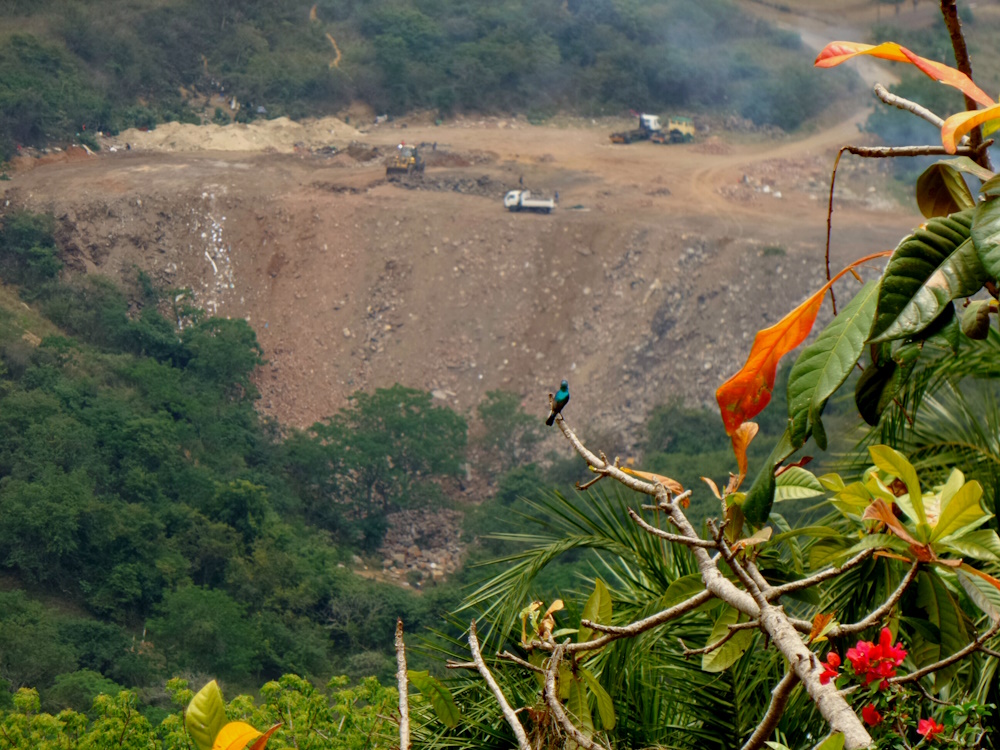
"Paved paradise" by Serban Proches. A white-bellied sunbird looks on from its powderpuff tree perch, as heavy vehicles flatten a new refuse disposal site (KwaZulu-Natal, South Africa).
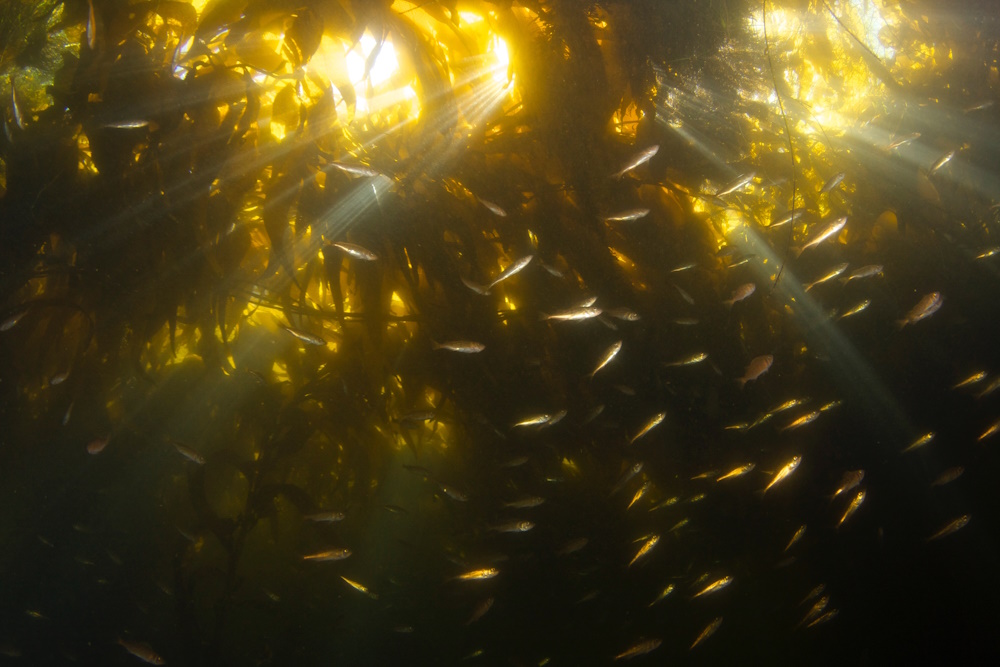
"Bocaccio and sunrays" by Scott Gabara. Bocaccio and sunrays through kelp off of Otter Point, Pacific Grove, California.
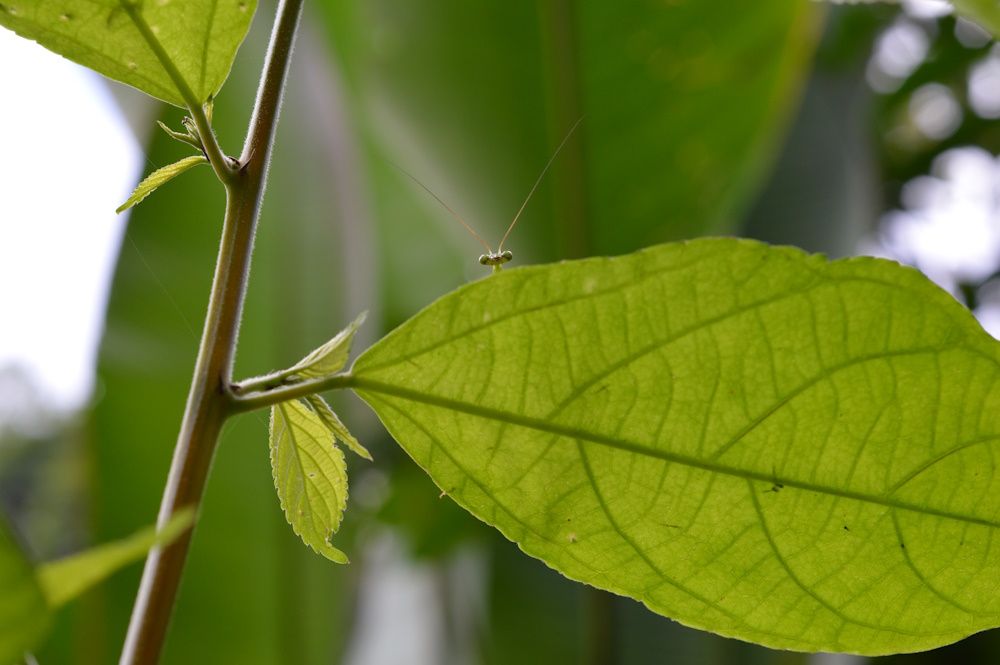
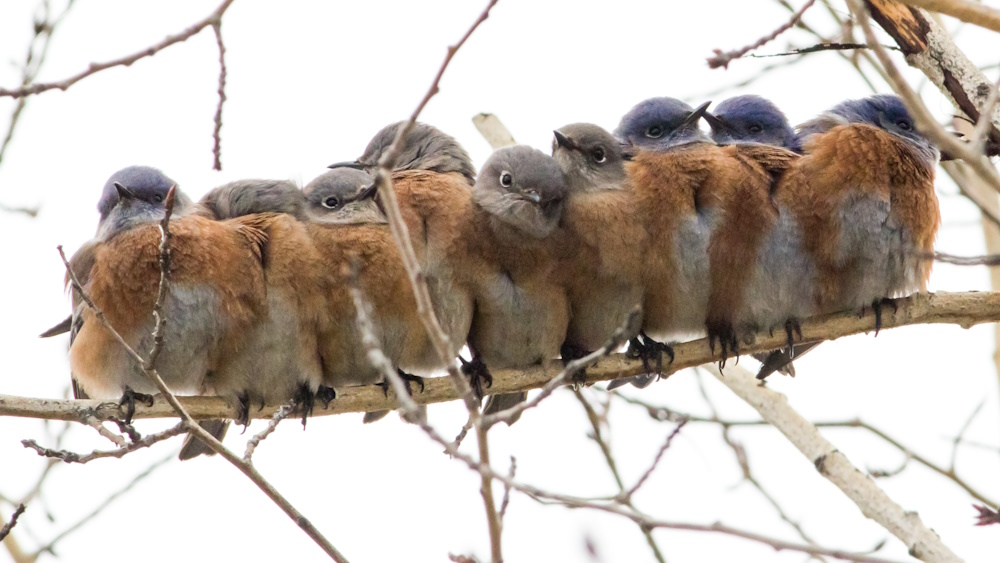
"Western bluebirds at the edge" by Robert Lalonde. It was a cold afternoon in early December in the Interior of British Columbia. The western bluebirds were foraging for Sumac berries and when not actually feeding, were huddling for warmth. They disappeared shortly after this shot was taken, presumably for south points. Shot with a Canon EOS Rebel T2i and a 400 mm f 5.6 L series lens. Strong backlighting required enhancing of shadow detail, altering the white balance, altering the contrast and general sharpening.
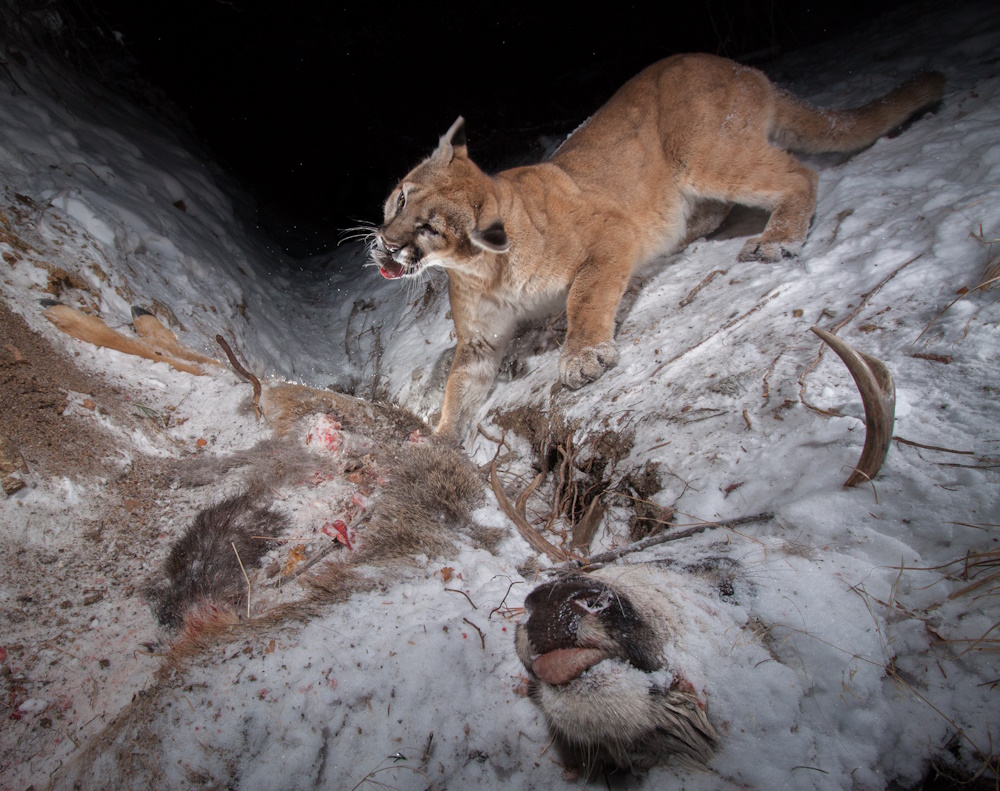
"Frozen dinner" by Jonathan Armstrong. A mountain lion feeds on the frozen carcass of a mule it killed the prior night. During winter, cached prey is safe from pilfering black bears, but freezing temperatures increase handling time. Here the cougar works hard to rip tiny bites off the frozen deer.
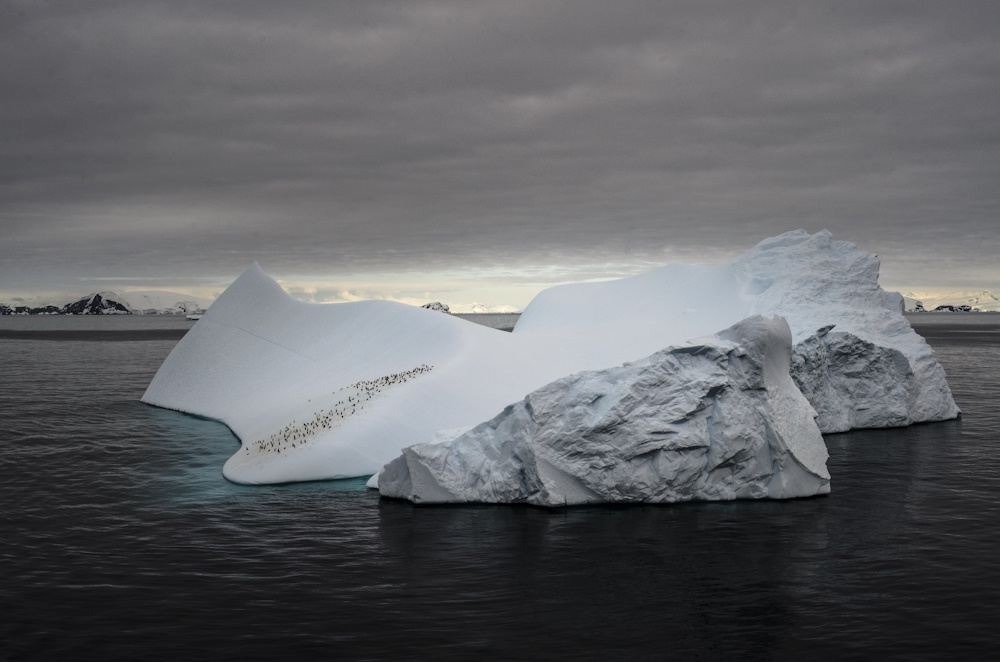
"Safety in numbers" by Alex Borowicz. Ice is a way of life. It influences the oceanography of the Southern Ocean, provides winter food for krill, and is used by marine mammals and seabirds alike as a means of escaping the cold and predators in the water below. Gerlache Strait, Antarctica. Tone and contrast adjustments, dodging, sharpening, dust removal. Nikon D7000, 28mm, 1/320, f16, ISO250.
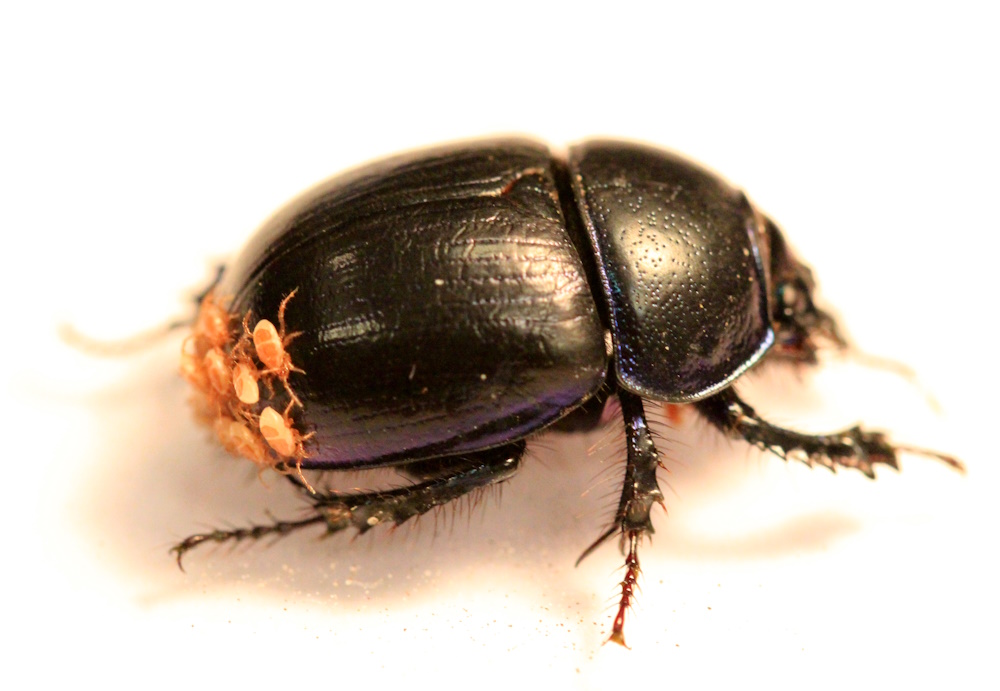
"Earth-boring dung beetle carrying phoretic mites" by Tom Ratz. Dung beetles often travel from one foraging site to the other. By doing so they provide an efficient means for the dispersal of commensal mites that are usually unable to fly and cover long distances. Here is an earth-boring dung beetle, Anoplotrupes stercorosus (Coleoptera: Geotrupidae), carrying more than a dozen mites (CNRS field station of Foljuif, France). Canon EOS 700D, 105mm Macro, 1/200 sec at f/5.6. Digital enhancements: The photograph has been cropped, contrast and saturation slightly increased.

"War on a piece of kelp" by Fredrik Pleijel. The bryozoan colony to the left (Membranipora membeanacea) was founded by a larva in the middle of the spiral and has then multiplied asexually. From the right comes another, conspecific colony. To be overgrown means death, so this is a war-zone. And then, near the spiral, a larva from another species (Electra pilosa) has just settled and started to grow. The image has been sharpened and cropped and toning slightly adjusted.
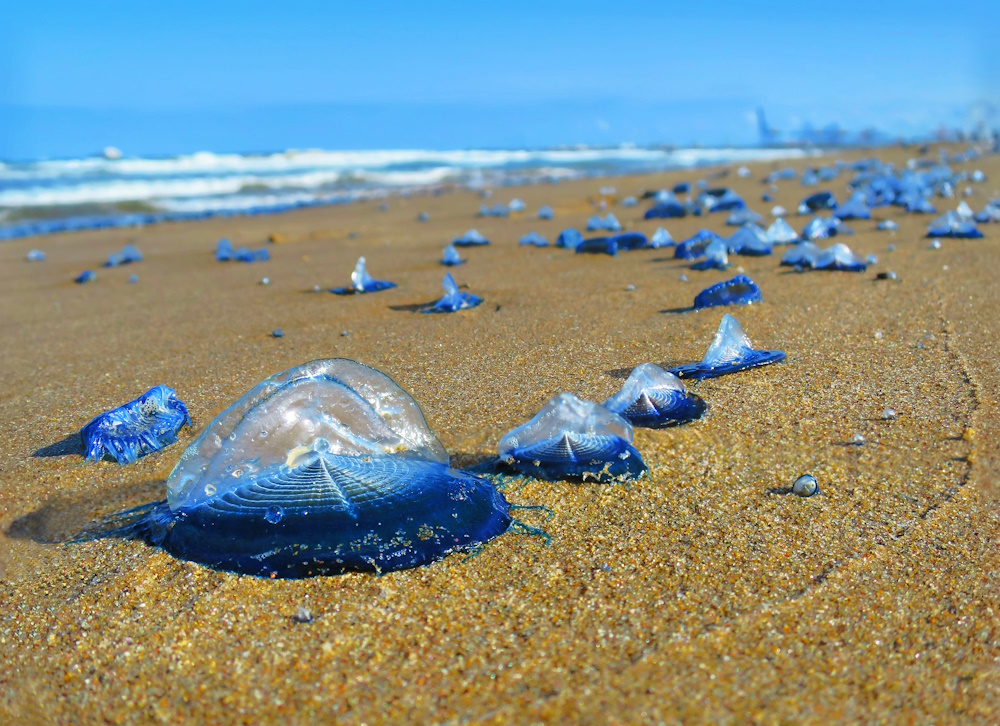
"The beach in blue" by Joan Josep Soto Angel. Thousands of Velella velella (Cnidaria: Hydrozoa) stranded in Malva-rosa beach (València, Western Mediterranean) after a massive blooming event.
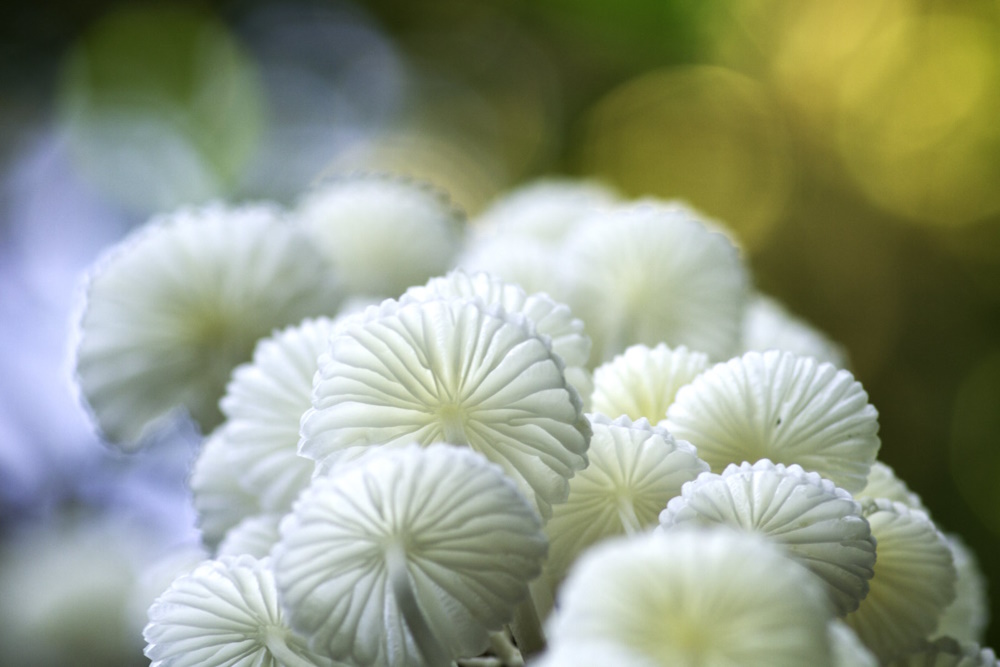
"Mushroom power in Peruvian rainforest" by Andrius Pašukonis. I have never seen such obvious fungus domination as in the Amazonian rainforest. Every dead creature and every piece of rotten wood could get covered in spectacular fungi blooms within hours and the next day it would be all over. Fungi are a truly underestimated power of our ecosystems. Photographed in the Amazonian Peru.
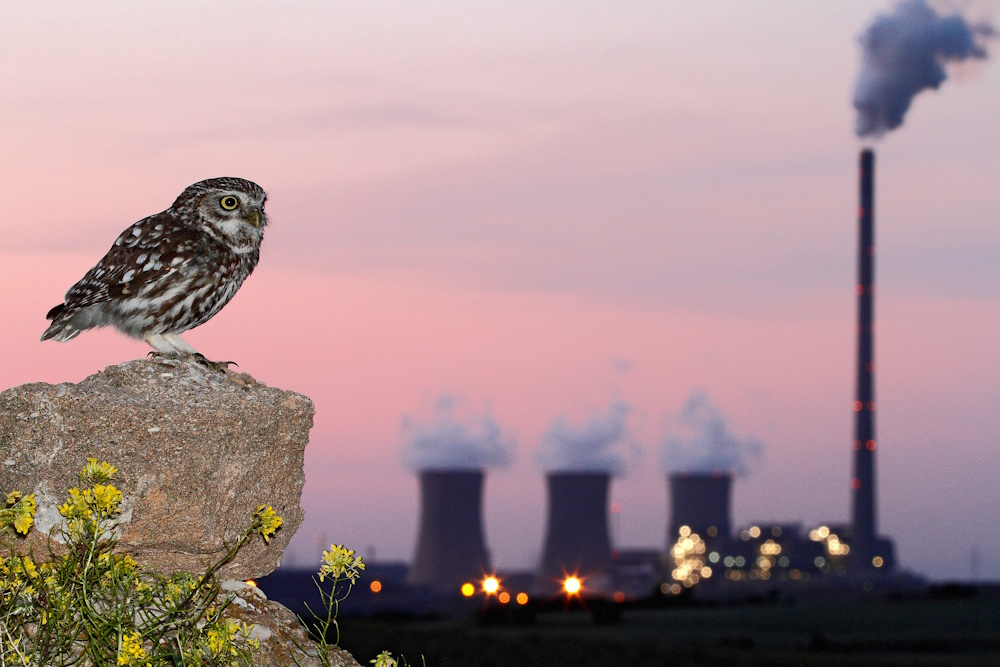
"Adaptation" by Jonathan Díaz Marbá. A little owl photographed on one of their perches with the thermal power plant of Andorra (Teruel, Spain), at the bottom, whose chimney reaches 343 meters high. Many animals have to adapt to the changes that humans have introduced into their natural environment.
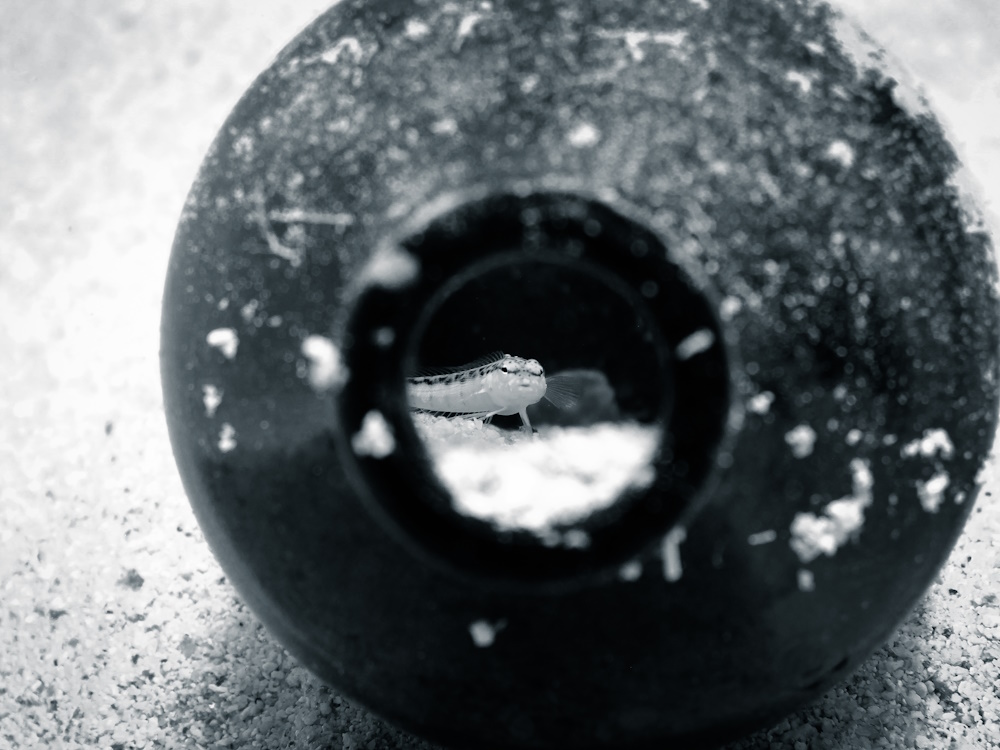
"Messenger in a bottle" by Simon Gingins. Most things we throw in the ocean just disappear below the surface. Even if most of the time we do not see where it ends up, marine creatures have to deal with everything we throw at them. Some might find a use for it, like this juvenile sandperch (Parapercis hexophthalma) that made an empty beer bottle its home on the Great Barrier Reef. Unfortunately, many creatures end up eating, get entangled, injured, and generally hurt by our trash. Just because we cannot see what is below the surface does not mean that we should care about it less than what is in plain sight. Post-processing: black & white, some cropping.
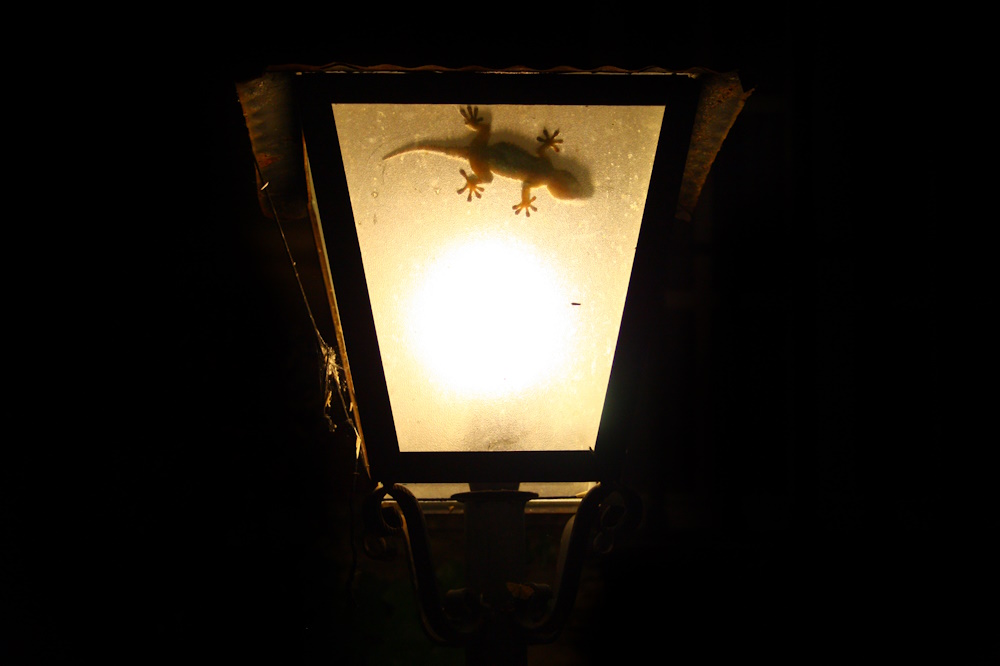
"At night" by Roberto García Roa. When everyone is sleeping...it is the moment...it is their moment. Several Tarentola mauritanica go to the streetlamp for hunting.

